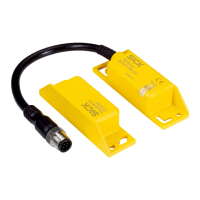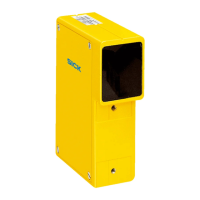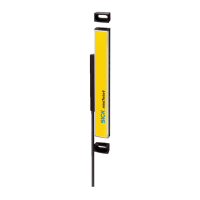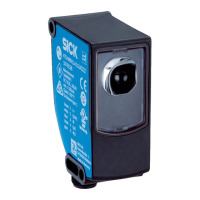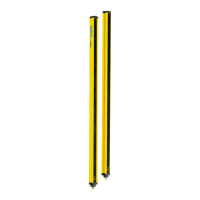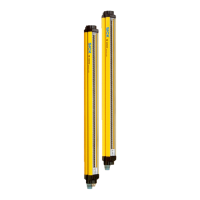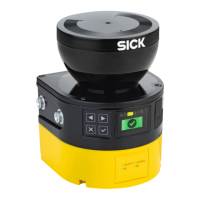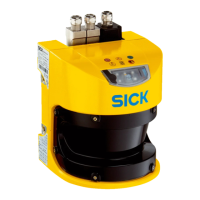Figure 18: Distance of the protective field from the wall
1
Recommended distance of the protective field from the wall.
If the distance between the protective field and the wall is so large that a person can
s
tand in it, this person might not be detected. In this case, appropriate measures are
required to prevent it, e.g. deflector plates or a fence.
4.3.8 Hazardous point protection
Overview
T
he safety laser scanner is mounted with a vertical scan plane in a stationary applica‐
tion. This is, for example, on a machine where the operator must stay close to the haz‐
ardous point. A fixed barrier with a height of at least 1,200 mm is located in front of the
hazardous point. The operator can reach over the barrier and through the scan plane
into the hazardous point. But the operator cannot climb over the barrier. If there is no
such barrier available, access protection may be required.
During hazardous point protection, the safety laser scanner detects a person’s hand or
other part of their body of at least the same size. The protective field is orthogonal to
the direction of approach.
You must monitor a reference contour to protect the safety laser scanner from acciden‐
tal misalignment or manipulation.
4 P
ROJECT PLANNING
28
O P E R A T I N G I N S T R U C T I O N S | nanoScan3 I/O 8024596/15VP/2019-11-15 | SICK
Subject to change without notice

